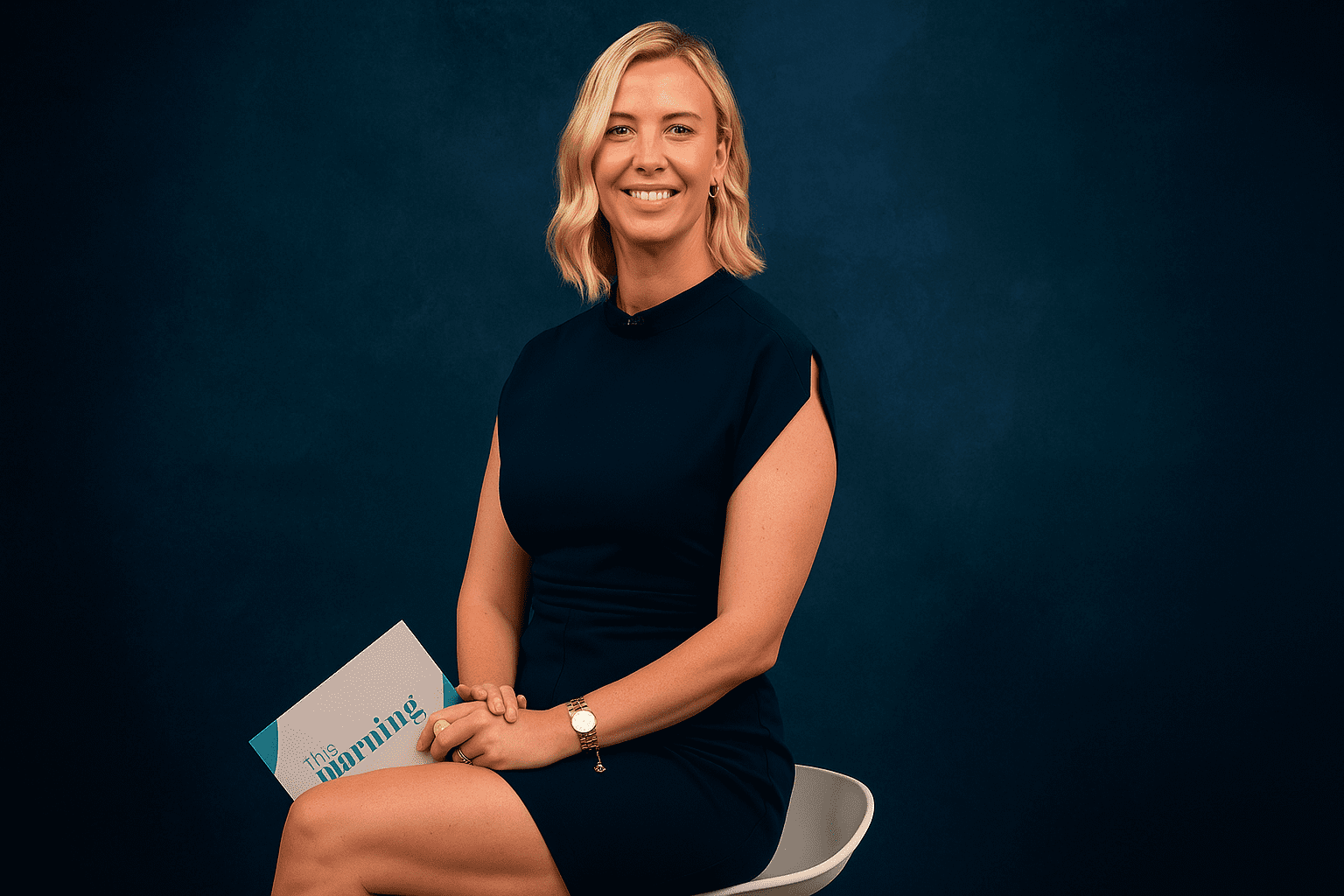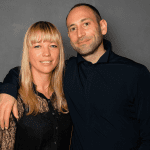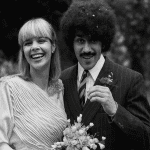In the ever-changing world of sports broadcasting, few names have risen as rapidly and confidently as Shebahn Aherne. Known for her clear-cut opinions, witty delivery, and unshakable passion for football, Aherne has become one of the most recognizable female voices on talkSPORT—one of the UK’s biggest radio and digital sports networks.
But Shebahn isn’t just another presenter. She represents a generational shift in football media—one that blends traditional radio grit with modern digital fluency and an authentic connection to both the men’s and women’s game.
This article takes you deep into her story—her early life, her climb through Scottish radio, her defining moments on talkSPORT, her advocacy for women’s football, and why her name has become synonymous with progress and personality in British sports broadcasting.
Early Life and Scottish Roots
Shebahn Aherne was born and raised in Glasgow, Scotland, a city where football isn’t just a pastime—it’s practically a birthright. Growing up in a family that lived and breathed the sport, Shebahn was surrounded by the energy, rivalry, and passion that define Scottish football culture.
Her twin sister, Ruesha Littlejohn, would go on to become a professional footballer and international for the Republic of Ireland, while Shebahn carved her path through the media. Together, they form one of the most fascinating sibling duos in British football—a player and a presenter, each shaping the game in different ways.
Shebahn’s Glaswegian upbringing gave her an accent, attitude, and authenticity that resonate strongly with audiences. She carries that no-nonsense Scottish frankness that listeners instantly trust—a rare commodity in an era of media polish and PR filters.
Breaking Into Broadcasting: From Clyde 1 to talkSPORT
Every broadcaster starts somewhere, and for Shebahn Aherne, that “somewhere” was Clyde 1, one of Scotland’s most popular radio stations.
At Clyde 1, she started behind the mic as a traffic reporter and presenter, learning the rhythm of live radio—the timing, tone, and quick-thinking instincts that come only from working under pressure. It was here that she developed the broadcasting fundamentals that would later make her a national voice.
Her progression wasn’t overnight. Aherne spent years honing her craft, taking on various on-air and off-air roles. What set her apart was her ability to bring personality into routine broadcasting. Even during brief news or travel segments, she had a spark that made listeners pay attention.
Eventually, her talent and drive earned her an opportunity to join talkSPORT, the UK’s largest commercial sports radio network. It was a major leap—from local Scottish radio to a national platform—but Shebahn embraced the challenge.
talkSPORT: Finding Her Voice on the National Stage
At talkSPORT, Shebahn Aherne quickly became a standout voice. Known for her lively debates, confident delivery, and deep knowledge of both men’s and women’s football, she built a reputation for authentic, balanced, and passionate broadcasting.
Early Roles and Recognition
Initially, Shebahn began by presenting sports bulletins and providing news updates, a common entry point for newcomers to the talkSPORT ecosystem. But her natural charisma and football fluency made her an ideal fit for more conversational roles.
Soon, she began co-hosting and contributing to panel discussions, matchday shows, and morning programming. Her chemistry with senior broadcasters and ex-players—often balancing humor with sharp insight—made her an audience favorite.
Becoming a Voice for Women’s Football
As the popularity of women’s football grew—especially after events like the Women’s Euros and World Cup—Shebahn emerged as one of its leading advocates within the mainstream sports media.
She consistently used her platform to champion the women’s game, counter outdated attitudes, and highlight the professionalism and entertainment value of women’s football. Her coverage wasn’t tokenistic—it was equal, informed, and delivered with the same enthusiasm as her discussions of men’s matches.
The Alan Brazil Debate: A Viral Moment That Defined Her
One of the moments that cemented Shebahn Aherne’s name in the public consciousness came during a heated on-air exchange with veteran talkSPORT host Alan Brazil.
During a discussion about fan interest in women’s football—specifically the Manchester United Women’s team—Aherne pushed back against comments she felt were dismissive and outdated. The conversation turned into a spirited debate that quickly spread across social media.
While some headlines framed it as “Shebahn Aherne calls co-host a dinosaur,” the deeper meaning was clear: Shebahn wasn’t afraid to challenge stereotypes or defend women’s football’s legitimacy, even against seasoned figures in her industry.
Listeners praised her for her composure, assertiveness, and professionalism—a combination that demonstrated not just her communication skills but her integrity. It wasn’t about confrontation; it was about standing for respect and representation.
That moment marked a turning point, not just for Shebahn personally but for the perception of women’s football within mainstream sports radio. It showed that women’s voices weren’t guests in the conversation—they were leading it.
The Kick Back: talkSPORT Women’s Football and New Formats
In addition to her main radio work, Shebahn co-hosts and produces content for “The Kick Back,” talkSPORT’s flagship women’s football show.
The program blends humor, analysis, and candid locker-room energy, with players and pundits joining in for lively conversations. Her co-host? None other than her twin sister, Ruesha Littlejohn—a professional footballer who brings firsthand player experience to the mix.
The dynamic between the two is infectious. Ruesha provides on-pitch perspective; Shebahn provides broadcasting polish and fan-level curiosity. The result is a show that’s both informative and entertaining—a perfect introduction for new fans discovering the women’s game.
Together, they’ve built a platform that bridges two worlds: football media and player experience. And it’s paying off—clips from The Kick Back regularly go viral across social media, expanding talkSPORT’s reach to younger, more diverse audiences.
Advocacy, Representation, and the Rise of Women’s Football
Few media figures have done more to normalize women’s football coverage on mainstream radio than Shebahn Aherne.
For years, women’s football in Britain was under-covered and under-valued. But as the sport exploded in visibility—thanks to the Lionesses’ success and the growth of the Women’s Super League—Aherne became one of its most trusted voices.
She approaches the topic not as an activist or a marketer, but as a football journalist who genuinely loves the game. Her tone is inclusive, not combative. She treats women’s matches with the same level of analysis and emotional investment as Premier League fixtures.
Beyond radio, she’s also contributed to TV and digital football coverage, including Champions League discussions and features around international tournaments. Her work helps demystify women’s football for casual fans and builds respect for it among traditional audiences.
Broadcasting Style: Confident, Engaging, and Relatable
Shebahn Aherne’s success is no accident. Her broadcasting style combines three powerful qualities that resonate with modern audiences:
Authenticity
Listeners feel like they’re hearing from a real person, not a script. She’s conversational but articulate, mixing professional insight with relatable humor.
Balance
Aherne is adept at balancing strong opinions with fairness. She can challenge her colleagues without turning debates into arguments, keeping discussions engaging and respectful.
Inclusivity
She doesn’t speak to fans—she speaks with them. Whether it’s Premier League updates or Women’s Super League analysis, she creates a sense of shared excitement.
This combination of warmth and authority is exactly what makes modern broadcasters stand out. In a social-media-driven era, personality is the currency—and Shebahn’s personality shines through effortlessly.
The Role of Family and Football: The Twin Factor
The connection between Shebahn Aherne and her twin sister, Ruesha Littlejohn, is one of the most endearing aspects of her story.
While Shebahn has built her career behind the microphone, Ruesha has made her mark on the pitch—playing for clubs across the UK and representing Ireland at the international level. Their shared love for football keeps their professional worlds intertwined.
The two often appear together in interviews and podcasts, discussing football culture, family life, and the growth of the women’s game. Their bond adds depth and authenticity to Shebahn’s coverage—it’s not abstract analysis; it’s part of her lived experience.
Social Media Presence and Digital Influence
Shebahn Aherne isn’t just a radio personality—she’s a full-spectrum media presence.
Her Instagram showcases behind-the-scenes glimpses at the talkSPORT studio, travel snapshots, and playful interactions with colleagues. On X (Twitter), she shares commentary, match reactions, and occasional life updates—all in her signature light-hearted tone.
By blending personal charm with professionalism, she’s managed to build a strong community of listeners who follow her across platforms. It’s a model for how modern broadcasters can stay relevant in a digital age: by being both approachable and authoritative.
Impact on the Industry: More Than Just a Presenter
Shebahn Aherne’s influence extends beyond her on-air hours. She represents a new era for sports media—one defined by authenticity, gender balance, and a willingness to engage honestly with fans.
Her rise reflects a broader industry trend:
-
Radio stations and digital sports outlets are diversifying their presenter rosters.
-
Women’s football coverage is now an essential, not optional, part of programming.
-
Audiences demand genuine voices—presenters who feel real, not rehearsed.
Aherne embodies all three. She’s proof that the future of football broadcasting lies not in elitism but in inclusion, curiosity, and personality.
Lessons from Her Career: For Aspiring Broadcasters
Aspiring journalists and presenters can learn several valuable lessons from Shebahn’s career trajectory:
-
Start small, grow big. She didn’t begin at a national network—she earned her stripes in local radio and built upward through consistency.
-
Know your subject. Her deep understanding of football gives her credibility in every debate.
-
Be authentic. Personality and relatability go further than forced “radio voices.”
-
Speak up. Whether defending women’s football or challenging outdated views, standing your ground builds respect.
-
Adapt to digital. In the era of short-form content, her clips go viral because she’s camera-comfortable and conversation-driven.
These principles apply not only to sports broadcasting but to any media career in 2025.
Challenges She’s Overcome
It would be naïve to ignore the obstacles that women in sports media face—especially in a field historically dominated by male voices. Shebahn has navigated this environment with grace, persistence, and professionalism.
Some of those challenges include:
-
Skepticism from traditionalists who underestimate women’s football or female pundits.
-
Social media scrutiny—public figures often face disproportionate criticism online.
-
The pressure of representation, where every word can be overanalyzed because of gender dynamics.
Despite it all, Shebahn has maintained composure and consistency, showing that excellence and confidence are the best rebuttals to bias.
Personality Beyond the Mic
Off-air, Shebahn Aherne is known for her humor, humility, and team-first mindset. Colleagues often describe her as “the same person on and off camera”—a testament to her authenticity.
She occasionally shares snapshots of her travels, workouts, and social outings, but she keeps her private life largely personal, maintaining a healthy boundary between public persona and personal identity. In a culture obsessed with oversharing, this balance is refreshing.
The Broader Context: Women Leading Sports Media
Shebahn is part of a growing movement of women redefining sports broadcasting in the UK and beyond. Alongside names like Faye Carruthers, Natalie Sawyer, Kelly Cates, and Alex Scott, she contributes to a media landscape that finally reflects the diversity of its audience.
Her work at talkSPORT symbolizes more than just career success—it’s part of a cultural shift where competence and credibility outweigh outdated notions of who “belongs” in football commentary.
The Future: What’s Next for Shebahn Aherne?
Given her trajectory, Shebahn Aherne’s career is still in its ascent.
It’s easy to imagine her:
-
Hosting national TV coverage of major tournaments,
-
Fronting digital sports documentaries,
-
Or even leading a new cross-platform show blending football, culture, and humor.
She has the ingredients—experience, relatability, and audience trust—to evolve beyond radio and become one of the UK’s leading multimedia sports personalities.
If the last few years are any indication, Shebahn Aherne’s voice will continue to shape how we experience and talk about football for years to come.
Conclusion: Why Shebahn Aherne’s Voice Matters
In a time when sports media is finally expanding to reflect the diversity and dynamism of its audience, Shebahn Aherne stands as both a symbol and a catalyst.
She embodies the modern broadcaster: informed but relatable, confident yet empathetic, humorous without losing seriousness. Her rise from Glasgow radio to national prominence shows what’s possible when passion meets persistence—and when talent refuses to be boxed in by stereotypes.
For the next generation of fans and broadcasters, Shebahn’s journey is more than a career success story. It’s a case study in authentic communication, equal representation, and fearless integrity.
And if her trajectory continues, Shebahn Aherne won’t just be a talkSPORT name—you’ll be seeing and hearing her across every platform that matters in the world of football media.










